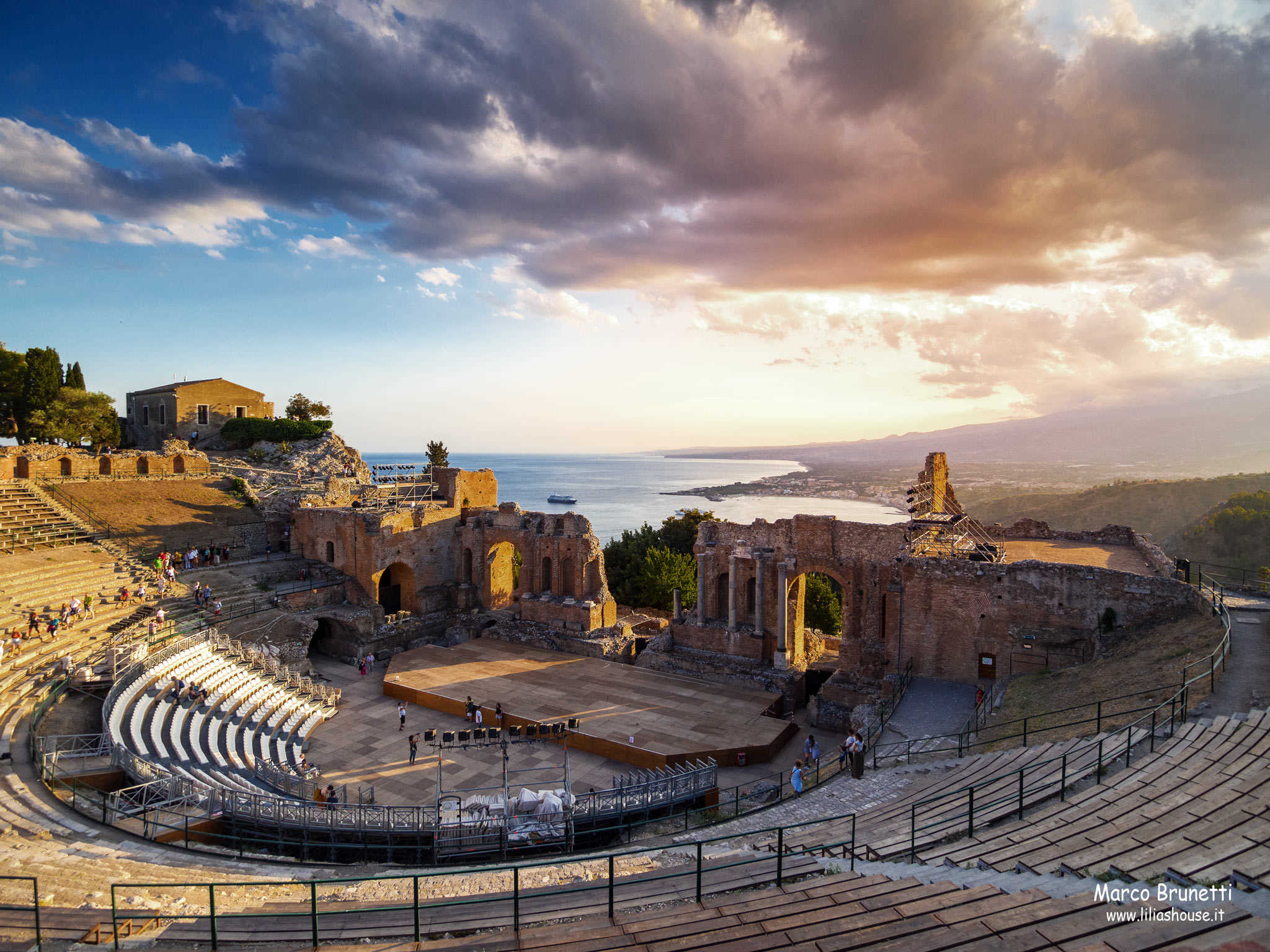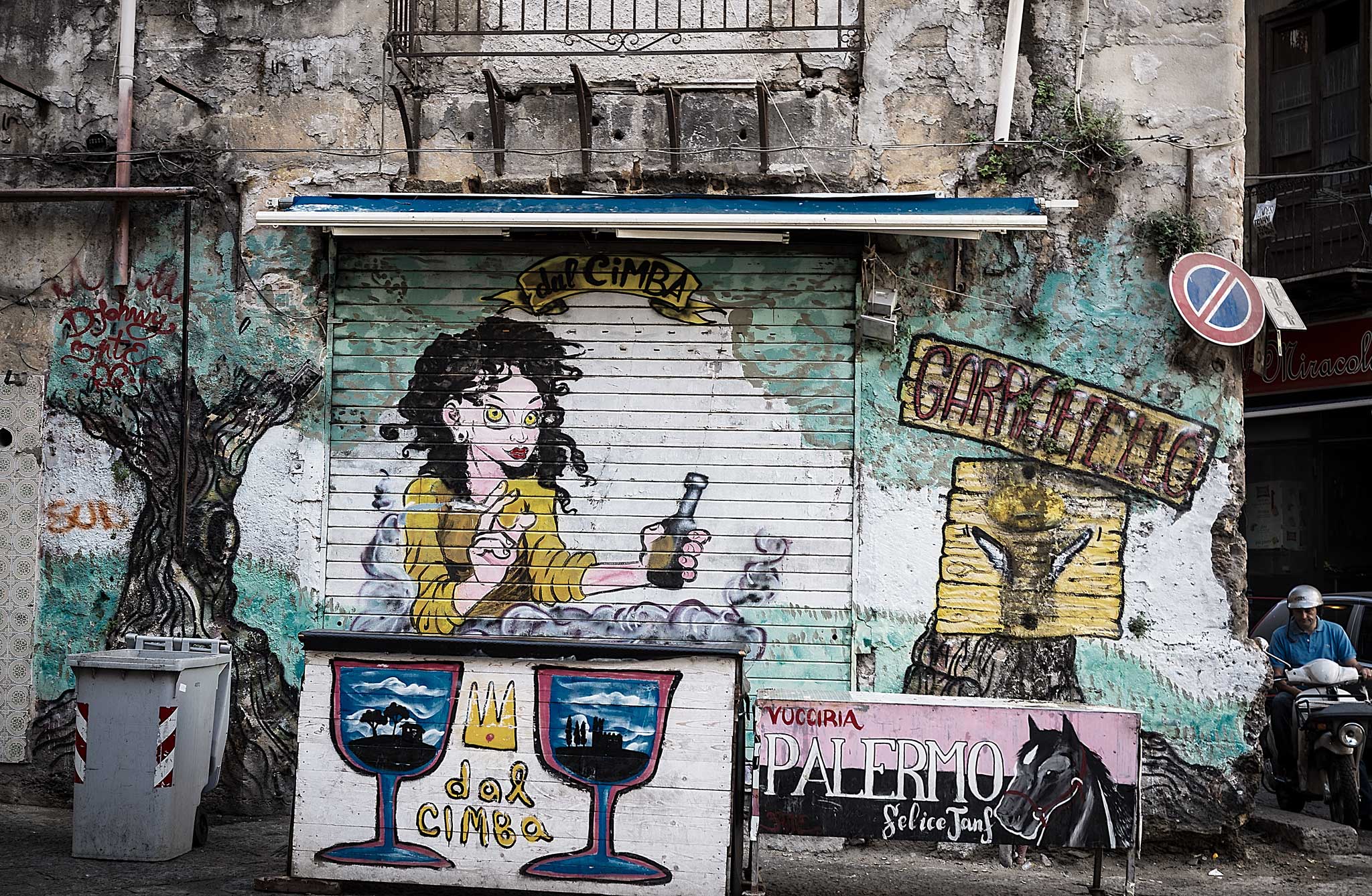All photographs displayed in these posts were taken and owned by Marco Brunetti, unless otherwise noted.
Saturday, November 04, 2017
Places to visit: Taormina
As soon as you arrive in Taormina, you will feel the magical, mythical atmosphere spread all around which has enchanted visitors from all over the world for years and years. Settled on a hill of the Monte Tauro, Taormina dominates two grand, sweeping bays below and on the southern side, the top of Mount Etna, the European highest active volcano, often capped with snow, offering to the visitors a breathtaking, dramatic and memorable view over almost one hundred miles of Mediterranean sea. Taormina really seems to be born as a tourist resort since past times, when ancient people like the Sicels, Greeks, Romans, Byzantines, Saracens, Arabs, Normans and Spaniards chose it as their residential site thank to its favourable position, mild climate and magic atmosphere. Nowadays visitors can still find fine examples of Taormina’s golden times: the splendid Greek Theatre, the Roman “Naumachiae”, the 10th century Palazzo Corvaja, the 13th century Cathedral of Saint Nicolò, the 16th century Palace of the Dukes of Saint Stefano, the public gardens, the “Badia Vecchia” (Ancient Abbey) and many others.
The resort was first publicised by a trio of German artists. In 1787 J.W. Goethe discovered the beauties of Sicily and, in particular, of Taormina. He wrote the world known novel “Italian Journey”, in which he describes the beauties of this land and its people and pronounced Taormina a “patch of paradise”. The German painter Otto Geleng rose intereset in Parisan art galleries exibiting his paintings about this magical landscapes. His contemporary, the young prussian photographer Wilhelm von Gloeden settled down in 1880 and made Taormina famous to all conservative European cultural clubs with his artistic portraits of nude sheperd boys with the volcano Etna on the backstage. Since then many important celebrities visited Taormina, electing it as their “escapade place” from chaotic city life. Patrik Brydone D.H. Lawrence, Truman Capote, Alexander Dumas, Anatole France, Andrè Gide, Paul Klee, Guy de Maupassant, Luigi Pirandello, John Steinbeck, Gustav Klimt, Elio Vittorini, Oscar Wilde, Richard Wagner, Johannes Brahms spent happy moments here. In more recent times movie, theatre and music celebrities such as Ingmar Bergmann, Francis Ford Coppola, Leonard Bergman, Marlene Dietrich, Greta Garbo, Federico Fellini, Cary Grant, Tyrone Power, Gregory Peck, Marcello Mastroianni, Elisabeth Taylor, Woody Allen have spent pleasant and memorable holidays in the Mediterranean pearl.
Since the opening of the first hotel in 1874, Taormina has become one of the world top tourist destinations where visitors can experience a perfect combination of old times charming atmosphere, preservation of history and culture, an elegant and lively way of life to be enjoyed in relaxing walks through the old town pedestrian areas. The tourist has a lot to do and see: top level art performances at the Greek theatre, several painting exhibitions held in local palazzi and churces, fine elegant shopping along the famous “Corso Umberto” with its classical music cafès and pastry shops. Or visiting local art museums, taking naturalistic walks in the surrounding countryside, golfing at the nearby 18-holes green, enjoying the fantastic beaches at easy reach, where the mild Mediterranean climate allows to practise all water sports as swimming, scuba diving, sailing, windsurfing, or just sunbathing for nearly eight months a year and even more. Welcome to Taormina, the ultimate holiday paradise!
For those looking for the world known Sicilian cuisine, the town offers a wide choice of restaurants, trattorias and pizzerias, pastry-shops, bars, cafes, pubs and for any taste and budget. You won’t find many fast food: Sicilians aren’t really crazy about them! Come and see why… go to history.
below some shoots
If you wish to know more about the place or the photos please send me a message.
Tuesday, August 22, 2017
Events: Ferragosto in Ortigia
Ferragosto in Syracuse
August 15th is when Roman Catholics celebrate the Assumption of the virgin Mary into Heaven - the day when Catholics believe Mary ascended to heaven "body and soul" after the end of her life on earth.
Every Ferragosto a procession takes place in Ortigia.
However, it was a holiday in Italy long before it took on a religious significance.
Ferragosto, the Italian name for the holiday, comes from the Latin Feriae Augusti (the festivals of the Emperor Augustus) which were introduced back in 18 BC, probably to celebrate a battle victory, and were celebrated alongside other ancient Roman summer festivals. These festivities were linked to the longer Augustali period - intended to be a period of rest after months of hard labour.
In Roman times, the celebrations included horse races, and the Siena Palio dell'Assunta, which takes place on August 16th, keeps these traditions alive.
It’s traditional to use the August long weekend to take a trip, usually escaping the heat at the seaside, lakes or mountains, so if you stay in town you'll notice it's much quieter than usual.
During the era of Fascism, the regime would organize trips with special offers for the 13th-15th August, the idea being that the less wealthy social classes would get the opportunity to visit a different part of the country, and even today there are often discounts on packages for the Ferragosto weekend.
below some shoots
If you wish to know more about the place or the photos please send me a message.
Thursday, July 27, 2017
Places to visit: Palermo
Palermo, the regional capital of Sicily, is one of those cities with its own very distinct, almost tangible atmosphere, a place of mystery where reality often outperforms the traveller’s imagination and preconceived stereotypes. It is a buzzing Mediterranean centre whose 1 million inhabitants are a fascinating cocktail of apparently conflicting characteristics.
Palermo’s history has been anything but stable as the town passed from one dominating power to another with remarkable frequency. Its strategic position in the middle of the Mediterranean brought wave upon wave of invaders including the Phoenicians, the Carthaginians, the Greeks, the Romans, the Saracen Arabs, the Normans, the Swabians, the French and the Spanish Bourbons just to name the most influential. The result of this quilted history is evident today in the vast range of architectural styles, the intriguing fusion of ingredients used in many local dishes and in many place names which are obviously not of Italian origin.
Visiting Palermo is still somewhat of an adventure in a world where so many places have become tourist-friendly to a fault. You won’t find many restaurants with menus translated into 5 different languages, you may have trouble communicating in English in many places, and some parts of the old town centre have remained untouched since they were bombed during the war. There are many back streets that have only just opened up to those from without and it is still often difficult to obtain any information worth having. However, this is also a stimulus to those who wish to embark on a little adventure, to discover things for themselves, to dig into the very fabric of the city and to try to understand what really makes Palermo (and its people) tick.
The often faded grandeur of many of Palermo’s wonderful palaces and churches in the centre gives way to popular areas whose way of life doesn’t fully belong to the 21st Century. This is particularly true of the markets, whose Arabic origins are still evident today thanks to their noise, smells, colours, narrow labyrinthine streets, the splendid array of food and other goods on display and the general ‘souk’ atmosphere.
Artistic delights abound at every corner, maybe most strikingly in the spectacular mosaics in the Palatine Chapel in Palermo and the Duomo of Monreale.
In his book “The Normans in Sicily” John Julius Norwich described the Palatine Chapel as follows: “It is in this building, with more stunning effect than anywhere else in Sicily, that we see the Siculo-Norman political miracle given visual expression - a seemingly effortless fusion of all that is most brilliant in the Latin, Byzantine and Islamic traditions into a single harmonious masterpiece.”
In 2015, Arab-Norman Palermo and its neighbouring cathedrals were granted status as a UNESCO World Heritage Site. Spread over a combined 6,235 hectares and including nine monuments - the Royal Palace and Palatine Chapel, the Zisa Palace, Palermo Cathedral, the Palermitan Churches of San Giovanni degli Eremiti, Santa Maria dell’Ammiraglio and San Cataldo, the Admiral’s Bridge, and the cathedrals of Monreale and Cefalù - the site provides, in UNESCO's words, "an outstanding example of a socio-cultural syncretism between Western, Islamic, and Byzantine cultures. This interchange gave rise to an architectural and artistic expression based on novel concepts of space, structure, and decoration that spread widely throughout the Mediterranean region... The innovative re-elaboration of architectural forms, structures, and materials and their artistic, decorative, and iconographic treatments – most conspicuously the rich and extensive tesserae mosaics, pavements in opus sectile, marquetry, sculptural elements, paintings, and fittings – celebrate the fruitful coexistence of people of different origins".
below some shoots
If you wish to know more about the place or the photos please send me a message.

























